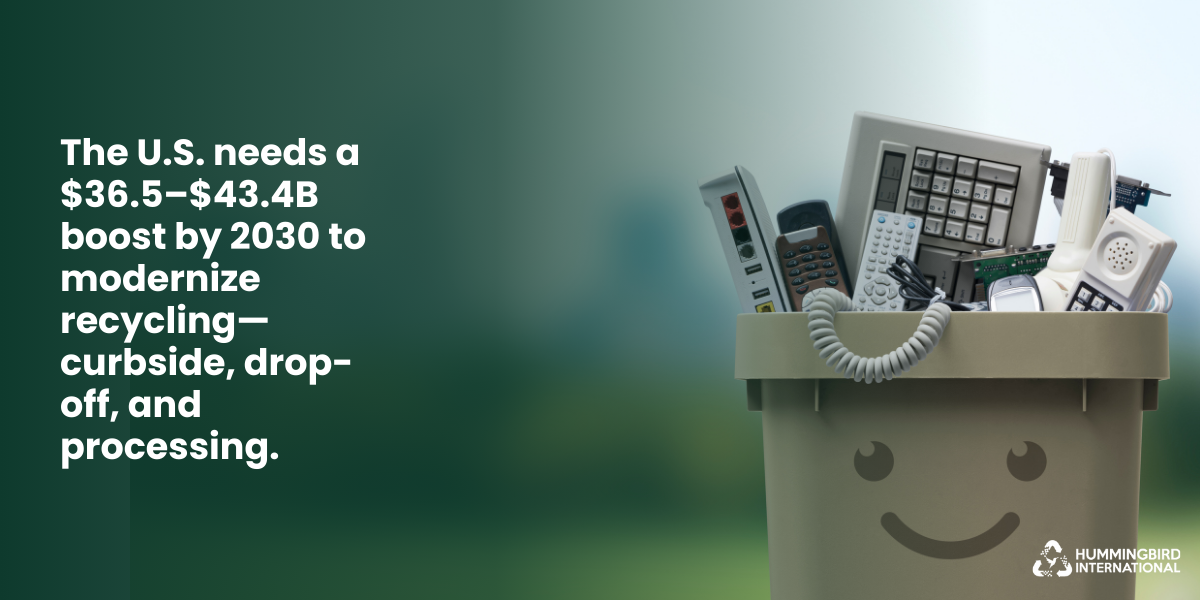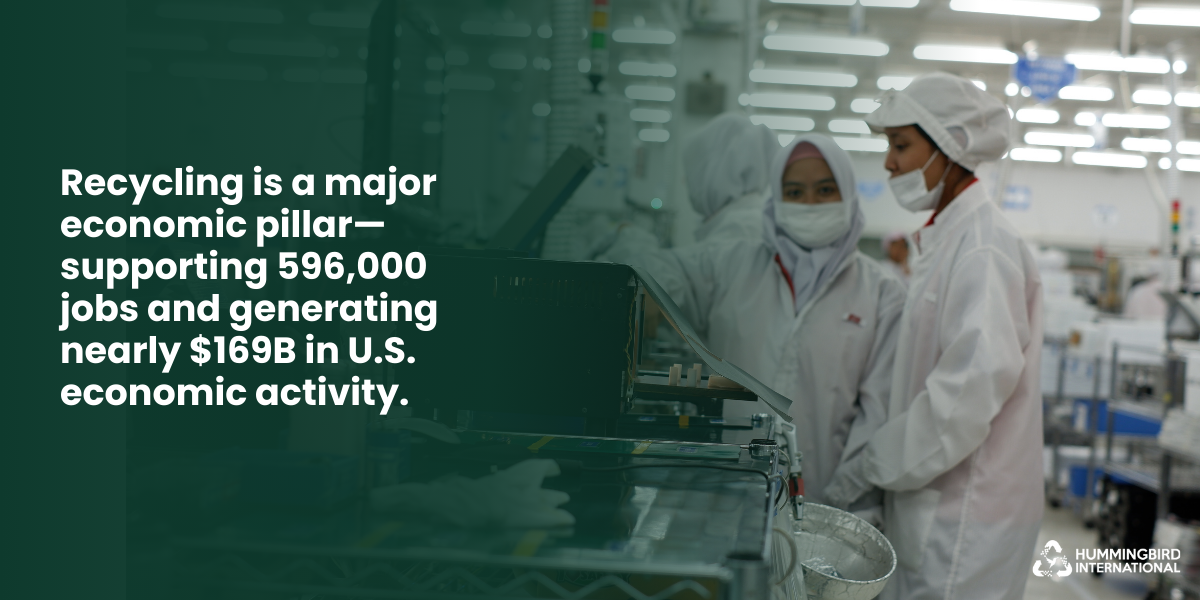Recycling in America has come a long way. Back in the day, it was a simple question of what garbage needed to go in which bin. Today, this question is far more complicated. It is about the infrastructure that enables recycling.
Today, recycling is more like a living system, with different components playing their part. Every bin, truck, sorting facility, and even the design of packaging plays its role. It has evolved from worrying about keeping the trash separate at home to building a system that can handle tons of waste sustainably and efficiently.
According to a 2025 Environmental Protection Agency report, the U.S. would need to invest $36.5 to $43.4 billion by 2030 to upgrade curbside collection, drop-off points, and processing infrastructure. Understanding the real costs behind recycling is the first step towards building a system that actually works for everyone.

How Recycling Has Changed Over The Years
In the 1990s, recycling felt straightforward. Communities used to separate glass, paper, and cans, and the curbside programs were cheap, eco-friendly, and a great alternative to sending everything to a landfill.
Critics like John Tierney, in his 1996 New York Times Magazine article, shook things up by claiming recycling was inefficient and more expensive than it seemed. And fast forward to 2025, recycling has become much more complex. According to a 2025 report from the National Academies of Sciences, Engineering, and Medicine (NASEM), in a survey of several U.S. communities, curbside recycling collection alone costs about US $45 per household per year.

But this shift isn’t just about numbers. It is a clear reflection of a system that’s under strain. It needs advanced Material Recovery Facilities, better public education, and smarter policy tools.
Why Recycling Still Matters
Despite the higher costs and modern challenges, recycling is still very important. When you look at the bigger picture, it is one of the strongest long-term investments the U.S. can make. Here are some reasons supporting the claim:
• It Is A Major Source of Economic Activity
Safe to say, recycling is a national economic pillar. The recycled materials sector supports around 596,000 jobs and contributes nearly $169 billion to the U.S. economic activity. That includes everything from metals and paper to plastics, glass, and electronics.

Many of these jobs sit within manufacturing, logistics, processing, and supply-chain operations. In other words, recycling helps keep U.S. factories running.
• Technology Is Advancing
The recycling system we have today is far more advanced than the one most people imagine. Companies across the country are investing heavily in new technologies.
These upgrades do two important things:
- They cut down contamination, which is one of the biggest drivers of cost.
- They increase the value of recovered materials because the output is cleaner and more consistent.
• Impacts The Environment Positively
Using recycled materials instead of fresh resources requires far less energy and produces significantly fewer greenhouse gas emissions. Even though these savings don’t show up on a city’s expense sheet, they still make a big difference in the national climate goals.
• Shifts The Cost Balance
Many people argue that recycling costs more per ton today, but landfilling isn’t exactly cheap either. EREF’s 2024 analysis shows that the national average landfill tipping fee is approximately $62.3 per ton, while the Northeast, one of the country’s most expensive regions, sees averages in the higher range of $80- $85 per ton.
The Challenges In Today’s Recycling System
Recycling may feel simple at the household level, but when you look behind the scenes, the system is dealing with a lot of pressure. There are two pressing issues at the center of the problem:
• Contamination
When you accidentally put the wrong item in the recycling bin, it may not seem like a big deal, but on a national level, it can be a costly setback. Non-recyclable materials, food residue, plastic bags, and mixed packaging can contaminate valuable recyclables. And when this happens, facilities must slow down operations, pull out more material by hand, and often send large portions of the batch to the landfill anyway.
• Unstable Funding
Local recycling programs are often built on weak financial models. They rely on the sale of recovered items, and when commodity prices drop, so does revenue. On top of that, city budgets are highly volatile and fluctuate year to year.
To build a stronger recycling system, reliable funding and smarter infrastructure will play a very important role.
The Conclusion
If you step back and look at the full picture, one thing will become crystal clear. Recycling is not failing; instead, it is evolving. The issues do not diminish its value, but the path forward calls for realistic investment, stronger policies, and better public education.
FAQs
Does recycling really help the environment?
Absolutely. Recycling reduces the energy needed to make products from scratch, cuts greenhouse gas emissions, and lowers the demand for fresh extractions.
What can I do to support the system?
The most straightforward and most powerful step is to recycle correctly. Rinse your containers, keep the plastic bags out of the bins, and follow local guidelines for recycling.
Why does recycling cost more today than it did in the past?
Recycling today uses more advanced sorting facilities, new technologies, and even stricter controls. These improvements have raised costs.
Does recycling reduce greenhouse gas emissions?
Yes, by using recycled materials instead of raw materials, we can reduce greenhouse gas emissions and even help the U.S. meet national climate goals.


Leave a Reply